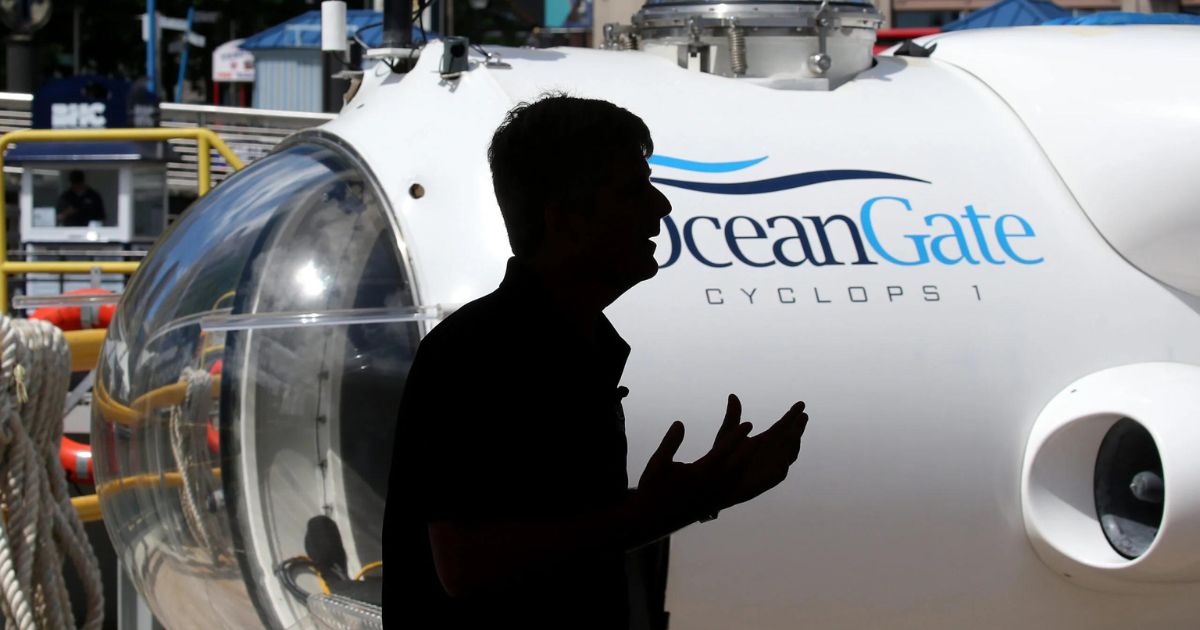According to a series of stolen emails released by The New Yorker, a former employee of OceanGate confided in one of his coworkers that he had severe worries about the company’s CEO, Stockton Rush.
The source questioned several expedition leaders and staff members, including David Lochridge, who served as OceanGate’s head of marine operations from 2013 to 2018.
The Titan submarine was described as “an accident waiting to happen” in the shocking report, and Lochridge disclosed that he had been sacked for continuing to voice his worries about the sub’s safety over a significant portion of its construction.
Lochridge asserts repeatedly in the report that management frequently disregarded his warnings, which he gave while on the manufacturing floor.
In fact, he said that shortly after being sacked from OceanGate in 2018, he had even sent an email to Rob McCallum, a project colleague, in which he expressed concern that Rush might perish on the submersible. He said, “I think Rush’s quest to “raise his ego” would kill him and others.”
Sadly, Lochridge’s email anticipated a terrifying chain of events that ended with the Titan’s terrible demise on June 18 and the heartbreaking loss of five lives. The Titan had been on a fatal trip to visit the Titanic wreck.
Along with Rush, the voyage resulted in the deaths of four other men: the British businessman Hamish Harding, the French diver Paul-Henri Nargeolet, the Pakistani-British millionaire Shahzada Dawood, and his adolescent son Suleman.
The Titan submarine was destroyed by a “catastrophic implosion,” according to the US Coast Guard, just four days after the boat was first listed as missing.
The New Yorker was able to see one of Lochridge’s emails that said, “I don’t want to be seen as a tattle tale, but I’m so worried he kills himself and others in the quest to boost his ego.”
I would consider myself quite ballsy when it comes to doing things that are risky, but that sub is a disaster waiting to happen,” he allegedly stated. You could not have offered to pay me to dive the object.
After a careful examination, Lochridge acknowledged that the Titan sub had a number of mistakes and problems that raised red flags.
In one particular case, Lochridge claimed that he had discovered adhesive that was peeled away at the seams of the sub’s ballast bags and that carelessly positioned mounting bolts might potentially lead to a rupture. The case was later resolved.
In the court filings, Lochridge also claimed that he had discovered snagging dangers and that the use of zip ties to secure important parts of the ship worried him. In addition, the former worker pointed out that the Titan featured vinyl inside wrapping and combustible flooring that would ostensibly release harmful fumes upon burning.
But Lochridge did have one major issue with the sub, which he indicated in the court filings was the carbon fiber core of the boat. The Titanic disaster is located 13,000 feet below the surface of the Atlantic Ocean, and this safety precaution is said to be what kept people on board the sub alive as they dove into its frigid depths.

Because of the high external water pressure at those depths, Lochridge had been persistent in raising his worries. He claimed that the carbon fiber pressure chamber had not been extensively tested and had never been utilized in another deep ocean sub.
Lochridge said in his complaint that he thought the sub needed to undergo more testing. He allegedly replied, “Verbal communication of the key items I have addressed in my attached document has been dismissed on several occasions, so I feel now I must make this report so there is an official record in place,” adding that he had refused to approve the submersible.
He said, “Cyclops 2 [Titan] should not be staffed during any of the next testing unless appropriate remedial steps are in place and closed out.




